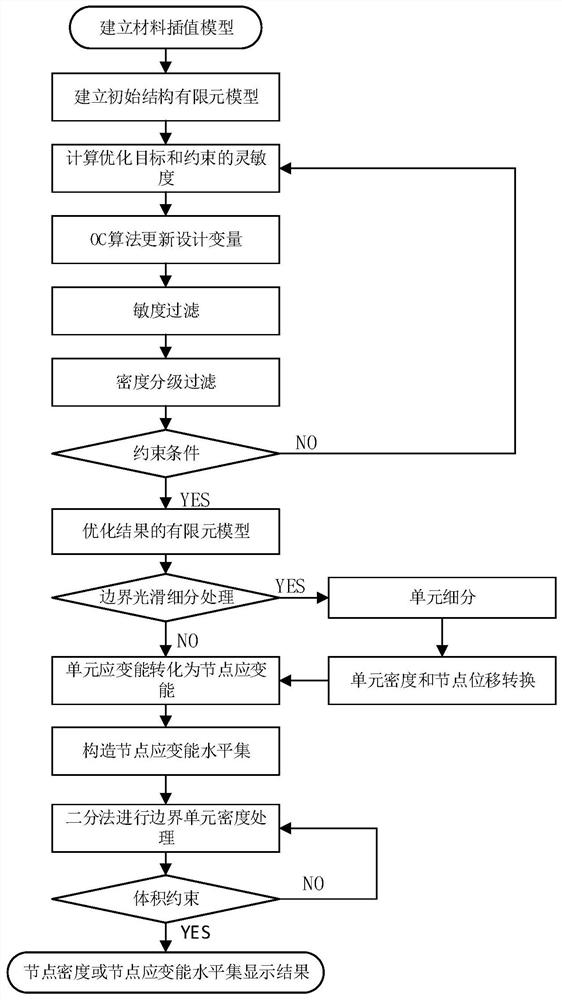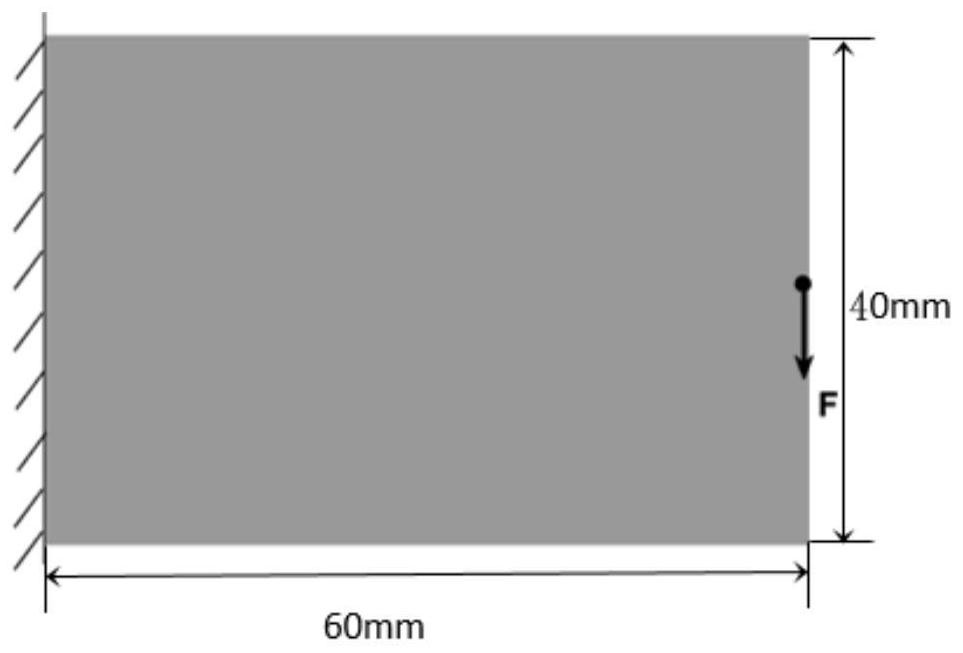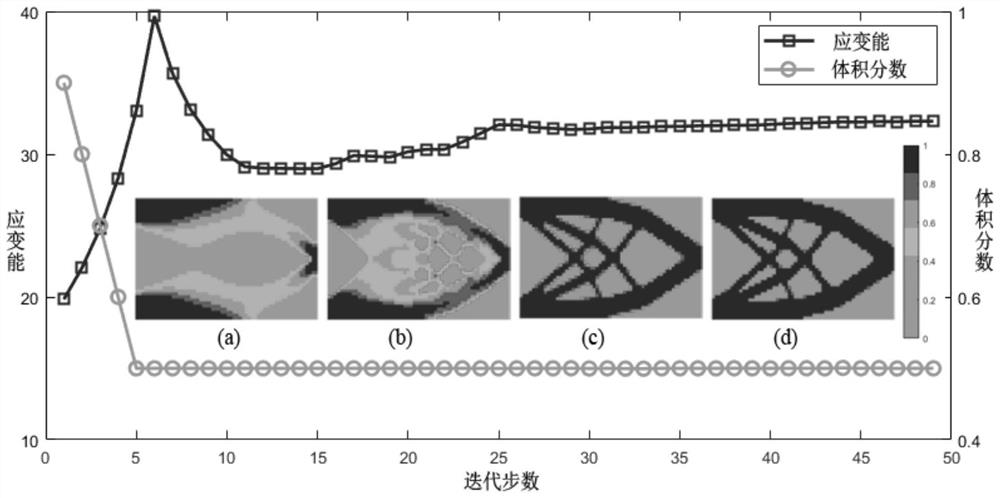Density evolution topological optimization method for continuum structure with smooth boundary
A smooth boundary and topology optimization technology, applied in design optimization/simulation, special data processing applications, etc., can solve problems that affect the stability of optimization algorithms
- Summary
- Abstract
- Description
- Claims
- Application Information
AI Technical Summary
Problems solved by technology
Method used
Image
Examples
Embodiment 1
[0088] A topology optimization method for density evolution of continuum structures with smooth boundaries, such as figure 1 shown, including the following steps:
[0089] S1. Establish the geometric initial design domain of the continuum structure through the drawing modeling module;
[0090] S2. Based on the material interpolation model without penalty function, the finite element model of the initial geometric design domain is established, the structure is divided into several finite element element grids, and the optimization result is determined by the presence or absence of element density;
[0091] S3. Establish a mathematical model for the topology optimization problem of the continuum structure, with the goal of minimizing the structural strain energy and constraining the volume of the material used to establish an optimized mathematical model;
[0092] S4. Calculate the sensitivity of the optimization objective and constraints to the design variables, and filter th...
Embodiment 2
[0154] The BDE optimization method can be easily extended to the three-dimensional case. In another three-dimensional structural example, the BSE method is used to assist in the design of a bridge. Its initial design domain is as Figure 12 As shown, the bridge deck is a non-design domain. The nodal load on the bridge deck is 10000KN, and the bottom surface is hinged at four points. The elastic modulus of the material used is 20Gpa, the Poisson's ratio is 0.2, and the volume constraint is 0.2. The initial structure is calculated according to the symmetrical 1 / 2 model. At this time, the design domain is discretized into 52800 8-node units.
[0155] Calculated on a home-use IntelI5-CPU3.3GHz computer, the final number of iterations is 60 steps, and the calculation takes 2375 seconds. The final optimization result is a strain energy of 36.91, and the goal and constraint convergence curve is as follows Figure 13 shown. The optimized finite element model is as Figure 14 shown....
PUM
| Property | Measurement | Unit |
|---|---|---|
| Elastic modulus | aaaaa | aaaaa |
Abstract
Description
Claims
Application Information
 Login to View More
Login to View More - R&D
- Intellectual Property
- Life Sciences
- Materials
- Tech Scout
- Unparalleled Data Quality
- Higher Quality Content
- 60% Fewer Hallucinations
Browse by: Latest US Patents, China's latest patents, Technical Efficacy Thesaurus, Application Domain, Technology Topic, Popular Technical Reports.
© 2025 PatSnap. All rights reserved.Legal|Privacy policy|Modern Slavery Act Transparency Statement|Sitemap|About US| Contact US: help@patsnap.com



